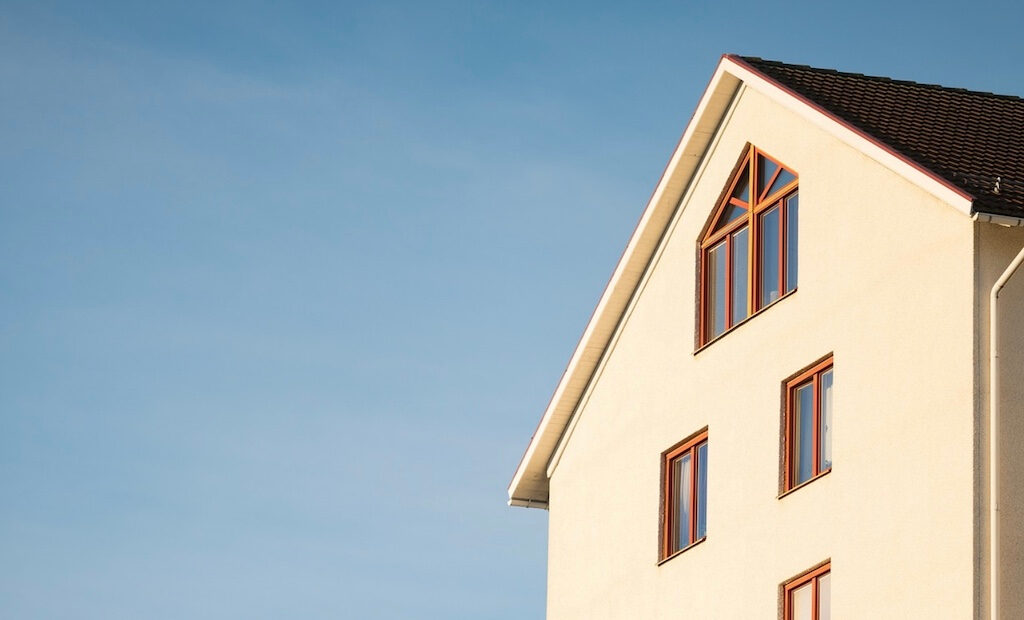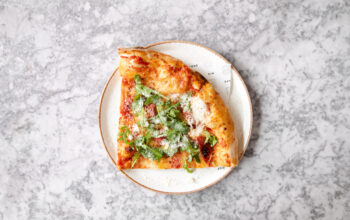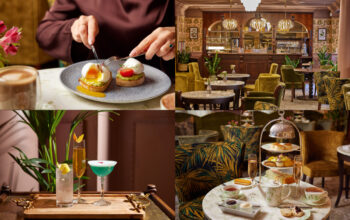The art of stylish relaxation: Designing home leisure spaces that inspire

In recent years, luxury interiors have evolved beyond simply offering a backdrop for daily life, becoming curated expressions of comfort, identity, and intent. The most forward-thinking homes no longer treat leisure as an afterthought but as a cornerstone of design, spaces where texture, proportion, and light work harmoniously to invite both activity and calm.
Here, relaxation is not accidental; it is crafted with the same care as a bespoke kitchen or a hand-finished staircase, ensuring that moments of pause feel as considered as moments of purpose.
This change has been driven by a growing recognition that the home is more than a place of shelter. For many, it has become the backdrop to almost every aspect of life, from work and socialising to exercise and recreation. In this context, leisure rooms and corners take on a new significance, becoming essential to the rhythm and quality of daily living.
Interior designers are increasingly viewing leisure as a design discipline in its own right. This means that decisions about furniture, textures, and colour palettes are made with both visual appeal and usability in mind. A room must encourage people to use it regularly while also holding its own as a visually engaging part of the home.
The pandemic years accelerated this shift. As time at home increased, the demand for spaces that could offer more than basic comfort grew. Homeowners began to invest in areas that supported hobbies, relaxation, and social interaction, recognising that a well-designed leisure room could be as valuable as a new kitchen or bathroom.
It’s not only sprawling country houses that embrace these designs, even compact city apartments now find ways to weave leisure seamlessly into their floor plans. It might be a reading corner tucked into a bay window, a foldaway games table in an open-plan living room, or a small bar area discreetly built into unused wall space.
One company that understands the importance of this balance is Home Games Room, a UK-based specialist in designing sophisticated leisure furniture, including elegant pool tables tailored for upscale home environments.
In many bespoke projects, their pieces act as both a visual anchor and a social catalyst, illustrating how a single feature can become a room’s heart while aligning seamlessly with the home’s overall design narrative.
These rooms are no longer treated as casual add-ons. They are planned with intention, positioned to draw people in, and designed to feel as integrated as any other part of the house. This integration ensures they remain in regular use, rather than gathering dust between special occasions.
In this way, leisure has evolved from a background activity into a defining element of modern living. It signals a shift in how we think about our homes, not just as functional spaces, but as environments that actively shape our well-being, creativity, and social connections.
Curated corners: From reading nooks to games lounges
In earlier decades, leisure areas in the home were often the result of convenience rather than design. A spare chair in the corner might suffice for reading; a repurposed basement might serve as a makeshift games area. Today, that approach has been replaced by deliberate planning that treats these spaces as a statement of lifestyle and taste.
The reading nook is perhaps the most emblematic example. Far from being an afterthought, it is now an exercise in atmosphere and functionality. Designers integrate built-in shelving, carefully chosen seating, and lighting to support focus and ambience. The result is a dedicated zone for quiet immersion.
Home bars in a compact bar cart or a fully fitted alcove have also seen a resurgence. They are placed in social spaces, where they serve a practical role and act as a focal point for entertaining. The choice of glassware, display arrangements, and even the bottles themselves often reflects the broader interior concept.
Game lounges have undergone a dramatic transformation. Once relegated to attics or basements, they now command prime placement within the home. Such a change reflects a broader understanding of leisure as an active contributor to well-being.
This evolution is supported by Psychology Today’s exploration of play and its impact on mental clarity, noting that environments designed for physical engagement and social interaction can help reduce stress and strengthen connections.
The most successful examples echo the home’s broader palette, textures and furnishings, creating an effortless transition between leisure and living spaces.
Colour plays a vital role in defining the atmosphere. Deep jewel tones can create a sense of intimacy and drama, while lighter, more natural shades open up the room and encourage a relaxed mood. These choices are often reinforced through texture, with tactile finishes adding depth and warmth.
Tactility itself is a defining characteristic of curated leisure corners. Soft velvets, cool leathers, warm timbers, and natural textiles invite touch and comfort. These materials are chosen not only for their durability but also for their ability to evoke an emotional response.
Lighting is another key element. A pendant over a games table can create a central focal point, while wall lights or concealed LEDs offer a gentle glow that shifts with the mood. This layered lighting ensures versatility for both day and evening use.
Furniture layout is designed to encourage interaction. In game rooms, seating is arranged to face both the table and fellow guests, fostering conversation and participation. The arrangement may be more introspective in reading areas, with a single armchair and side table oriented towards a view or a light source.
Storage is integrated into the design so that the room remains uncluttered. This might be shelving that blends display and utility or discreet cabinetry that conceals equipment and accessories.
These curated corners are designed with specific rituals in mind. A game’s night, a morning coffee with a book, or a late-night drink with friends each has its rhythm, and the space must support these seamlessly.
Perhaps most importantly, these spaces are meant to be used daily. They are durable enough to withstand regular activity, yet refined enough to maintain their aesthetic appeal. This balance ensures they remain relevant and loved for years to come.
Ultimately, the shift towards curated corners reflects a broader trend in interior design. The integration of leisure into the home’s fabric is no longer an afterthought; these areas are essential to how we live, offering beauty and purpose.
Designing for form and function
A leisure room’s success depends on how well it marries visual elegance with practical usability. The best designs achieve this without compromise, creating spaces that are both beautiful and functional.
Materials are a key starting point. Surfaces must be able to withstand regular use while also conveying quality. A solid oak table can be both a statement piece and a hard-wearing work surface, while a stone-topped bar can resist spills yet feel luxurious.
Lighting design shapes how a room is experienced. A pendant light over the main activity area can define its presence, while wall sconces or recessed lighting can soften the edges. The aim is to create layers of light that adapt to different moods and uses.
Furniture placement influences how people move through the space. A centrally placed table can become a natural gathering point, while seating arranged to face each other encourages interaction. Clear circulation routes prevent the room from feeling cramped.
Storage solutions are essential to maintaining the room’s visual clarity. Built-in cabinetry, hidden drawers, and discreet shelving keep accessories out of sight but within reach, ensuring the space remains inviting even when not in active use.
Durability is non-negotiable in high-use leisure spaces. Upholstery should resist wear while remaining comfortable, and flooring should be chosen for its resilience and aesthetic appeal.
Textures add richness to the design. Combining smooth and rough surfaces, warm and cool finishes can create a tactile landscape that interests the room visually.
Pool tables can be customised to suit the proportions and style of the room. This allows it to feel fully integrated into the home’s visual language rather than appearing as a standalone object. Such tailoring ensures the feature enhances the design rather than disrupting it.
Acoustics are often overlooked but can significantly influence comfort. Soft furnishings, rugs, and wall panels can help manage sound, preventing echoes in open spaces and ensuring a pleasant auditory environment.
Design flexibility means the room can adapt to different uses. A games room might double as a social lounge, or a reading area might become a quiet workspace when needed. This adaptability increases the space’s long-term value.
Every design choice, from the size of a light fixture to the finish of a table leg, contributes to the overall effect. Consistency in these decisions ensures that form and function support each other seamlessly.
Ultimately, when practical needs are met without sacrificing beauty, the leisure room becomes a place people want to use every day. That, in itself, is the mark of a successful design.
The psychological value of physical play and aesthetic calm
Leisure spaces are not purely about visual beauty. They influence how we feel, think, and interact with carefully designed environments that shape our mental and emotional state. A well-planned leisure room offers an escape from daily pressures, providing a place where the body and mind can reset.
Physical play, like playing pool or darts, creates a natural break from screen-based activities. It engages the senses, demands focus, and encourages presence. This analogue engagement feels refreshing and restorative in a world dominated by digital devices.
The very act of moving through a game can ease tension. Handling cues, arranging pieces, or leaning over a table to make a shot requires a kind of physical mindfulness. It grounds people in the moment, allowing them to focus entirely on the task.
Aesthetic calm complements this physical engagement. Soft lighting, balanced proportions, and uncluttered surfaces create a sense of order and control. When a room feels harmonious, relaxing into the activity it supports becomes easier.
Colour psychology plays a role too. Rich, warm tones can create an intimate mood that makes conversation flow, while cooler neutrals can encourage focus and clarity. As noted in research on how colour affects mood, these effects are heightened when paired with complementary textures such as leather chairs, wool throws, and polished timber, deepening the sensory experience.
These spaces also facilitate social connection. Families might gather for a regular game night, or friends might meet for an informal tournament. In these moments, the space becomes more than just a backdrop; it is a catalyst for shared memories.
The design must account for different modes of use. A games room might be lively one evening, then quiet and contemplative the next, hosting a single person reading or practising shots alone. Flexibility in layout and lighting makes this possible.
Well-placed decorative elements can enhance the atmosphere without overwhelming it. A framed print, a vintage trophy, or a sculptural lamp can add personality while keeping the focus on the main activity.
Even solitary leisure benefits from thoughtful surroundings. A single comfortable chair by a window, a small side table for a drink, and a well-chosen reading light can create a space that restores focus and energy.
Over time, these rooms often take on symbolic meaning. They represent a deliberate choice to prioritise rest, connection, and enjoyment in the home, making them investments not only in property but also in lifestyle quality.
By combining the benefits of physical play with the tranquillity of aesthetic design, homeowners can create leisure spaces that are both harmonious in form and satisfying to use. Such rooms support both the body and the mind, making them invaluable to modern living.
Ultimately, a successful leisure space is as much about the atmosphere it creates as the activities it houses. It should invite people to enter, stay, and return again and again.
Scenario: The mid-century inspired game lounge
Imagine a London townhouse with the lower ground floor transformed into a mid-century-inspired game lounge. The space is framed in walnut panelling, its deep tones complemented by terrazzo flooring and ochre-hued seating.
The centrepiece features a rotating vintage-style pool table, its polished wood gleaming under a sculptural pendant light. The table functions as both a game surface and a statement piece of furniture.
Large sliding doors open onto a courtyard garden, allowing daylight to flood. On summer evenings, the space extends outdoors, turning the garden into a natural extension of the lounge.
By day, the room is a family hub, with children reading or playing board games at the side tables. By night, it becomes a refined space for hosting friends, dimming lighting to create intimacy.
Shelving along one wall combines display and storage, holding books, decorative objects, and neatly stored game accessories. As shown in The Guardian’s feature on transforming unused spaces, carefully curated shelving can elevate a purely functional area into a visual statement, ensuring the balance between style and utility keeps the room elegant yet practical.
Textures are carefully layered. The smoothness of the wood contrasts with the softness of upholstered chairs, while stone surfaces add coolness to the palette.
The colour scheme is restrained, relying on earthy neutrals with subtle accents. This keeps the visual focus on the table and the overall proportions of the room.
Lighting changes with the time of day. Natural light dominates in the afternoon, while evening shifts to warm, ambient tones. This flexibility allows the room to suit different activities and moods.
Acoustic comfort has been considered, with rugs and upholstered panels softening sound. This makes conversation easier and creates a welcoming auditory environment.
The furniture arrangement encourages movement around the table, with enough space for both play and casual conversation. Guests can move easily between the lounge area and the garden.
Every element of this lounge reflects a commitment to both leisure and design integrity. It is a room intended to be lived in, offering comfort, style, and a strong sense of place. As explored in Wallpaper*’s feature on home environments that combine artistry with daily utility, spaces that embody personal taste while remaining flexible in function become enduring parts of daily life. This scenario shows how a leisure room can be tailored to individual identity yet remain a dynamic setting for everyday use.
Elegance as décor: The dual purpose of leisure installations
Leisure installations can be more than functional; they can be integral to a room’s decorative scheme. When chosen carefully, they enhance both activity and atmosphere.
A sculptural pool table is a prime example. Beyond its role in play, it can act as the visual anchor of a space, its craftsmanship and materials speaking to the homeowner’s taste and priorities.
Other games-related pieces can serve the same dual purpose. A finely crafted chess set, a bespoke dartboard cabinet, or a handmade shuffleboard table can all become conversation pieces.
The success of this approach lies in integration. The surrounding design elements should complement the installation’s style, ensuring a cohesive visual narrative.
Materials and finishes should be consistent. A walnut table will sit more comfortably in a room with matching timber accents. By contrast, a metal-framed design might suit a space with industrial influences.
Scale is another factor. The size of the installation must suit the proportions of the room, allowing for comfortable movement and sightlines.
Lighting should highlight the feature without creating glare or visual discomfort. Directional spotlights or pendant lights can be adjusted to enhance both appearance and function.
Even when not in use, these installations should contribute to the room’s atmosphere. Their form, colour, and placement should add to the aesthetic appeal.
Decorative accessories can enhance the setting. Framed artwork, textured rugs, or sculptural lighting can build a layered look that feels complete and intentional.
The aim is to make leisure part of the room’s identity rather than a separate or temporary feature. This ensures the space remains inviting throughout the day.
When leisure installations fulfil this dual role, they enrich the room in ways that go beyond their primary purpose. They become lasting investments in the home’s beauty and functionality, clear statements that leisure is no longer an afterthought, but an integral part of a refined lifestyle.
The editorial unit

























Facebook
Twitter
Instagram
YouTube
RSS